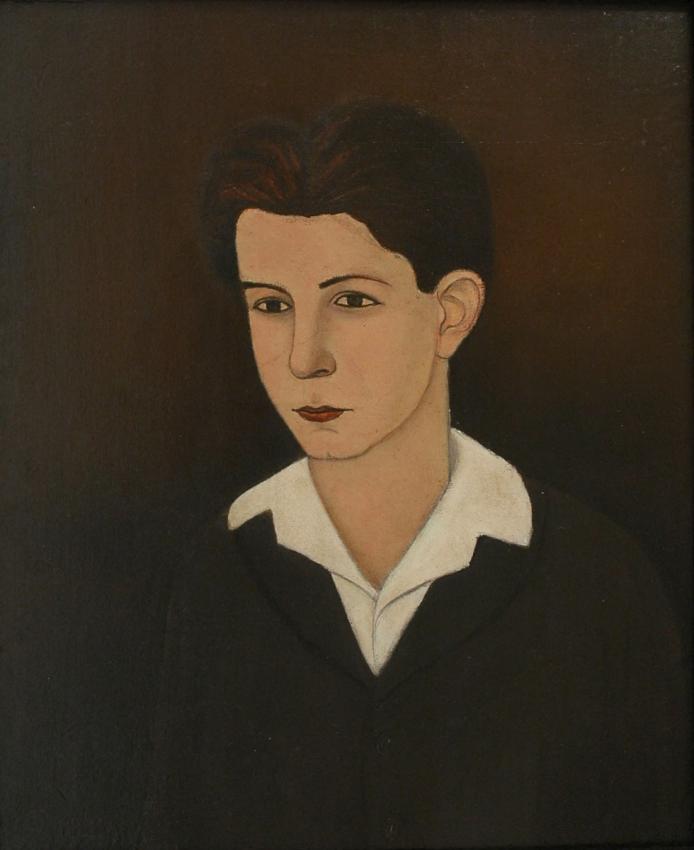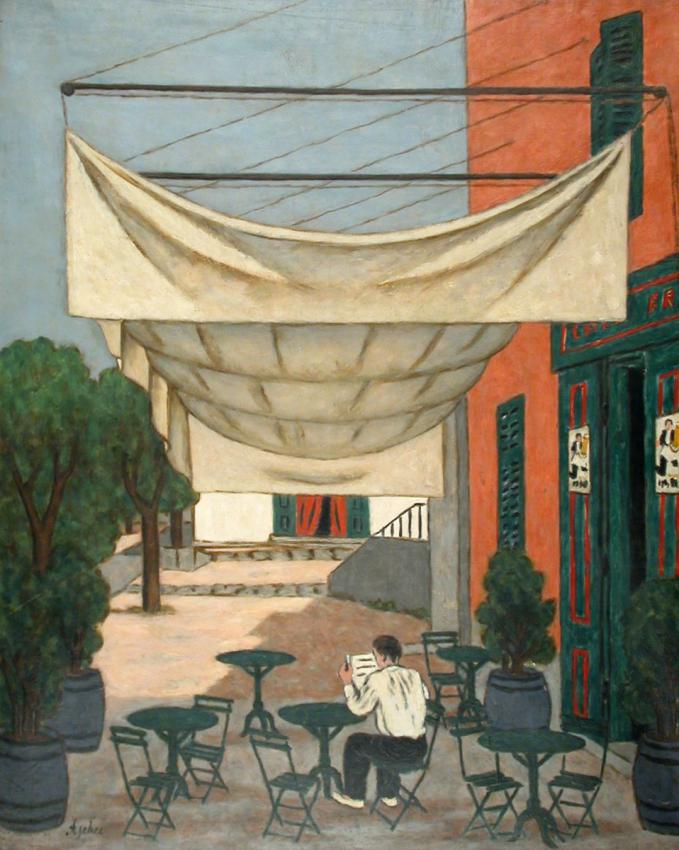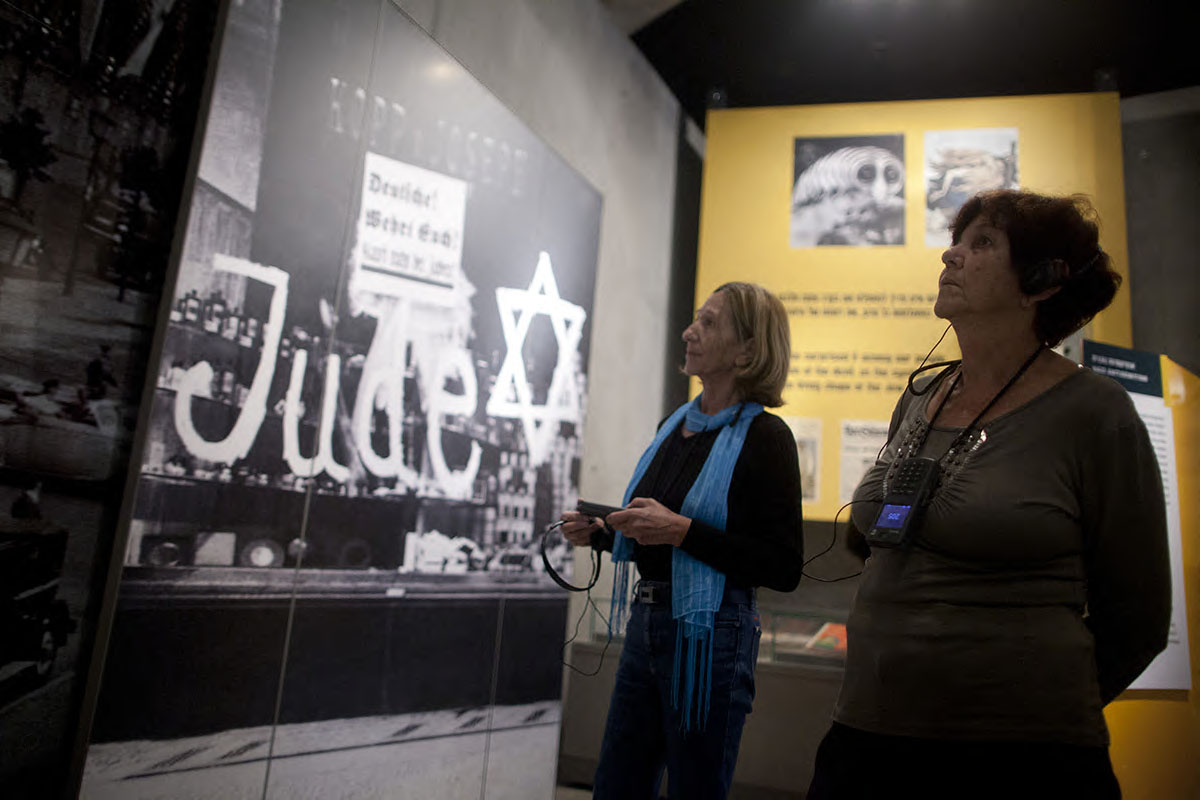
Oil on canvas
Collection of the Yad Vashem Art Museum, Jerusalem
Gift of Mrs. Lydie Lachenal, Paris


Oil on canvas
Loan of the Israel Museum, Jerusalem
Gift of Caroline and Joseph Gruss, New York

Sunday to Thursday: 09:00-17:00
Fridays and Holiday eves: 09:00-14:00
Yad Vashem is closed on Saturdays and all Jewish Holidays.
Entrance to the Holocaust History Museum is not permitted for children under the age of 10. Babies in strollers or carriers will not be permitted to enter.

Oil on canvas
Collection of the Yad Vashem Art Museum, Jerusalem
Gift of Mrs. Lydie Lachenal, Paris


Oil on canvas
Loan of the Israel Museum, Jerusalem
Gift of Caroline and Joseph Gruss, New York

Marking the historic UN resolution declaring 27 January as International Holocaust Remembrance Day, in January 2006 Yad Vashem’s new Exhibitions Pavilion opened its second exhibition, “Montparnasse Déporté” (Montparnasse Deported).
The exhibition opened in May 2005 at the Montparnasse Museum, Paris, in the presence of French President Jacques Chirac. Portraying for the first time in France the fate of artists of l’École de Paris (School of Paris), it focused on the lives and oeuvre of Jewish painters and sculptors who were persecuted and ultimately murdered by the Nazis and their collaborators.
In the exhibition were some 150 works of art accompanied by photographs, original documents and biographies. These pay tribute to the personal annals of more than 60 artists on display, among them Chaim Soutine, Rudolf Levy, Adolphe Feder, Otto Freundlich, Max Jacob and Leon Weissberg.
From the beginning of the 20th century until the outbreak of the WWII, Paris was a vital cultural center, attracting many artists who converged from all corners of Europe. Seeking the equal civil rights and liberal atmosphere in France denied them in their home countries, many of these artists headed for Paris, the arts capital. They settled in the Montparnasse Quarter, a lively center of activity for artists from all over the world. In the studios and cafés of Montparnasse, these newly arrived artists could meet and exchange ideas with the most influential personalities of the art world, such as Picasso, Chagall, Brancusi, Modigliani, Fujita, and Diego Rivera. Thus, more than a style or a movement, l’Ecole de Paris refers to the meeting of artists from different origins, in the same place, at the same time, with one common objective: creating art.
With the Nazi occupation of France in 1940, the persecution of Jewish artists began in earnest. Some artists managed to emigrate or go into hiding, but most were sent to concentration and death camps. As a result, the fascinating cultural phenomenon that was l’École de Paris came to an abrupt end.
The artists of l’École de Paris were not only physically murdered, their legacy was also fatally reduced to silence; their art burnt or plundered. One could say that these artists were thus “twice assassinated.” This exhibition provides a rare glimpse into the vibrant and pulsating world of Jewish artists on the precipice of the Holocaust, and its display at Yad Vashem is another link in the museum’s persistent efforts to honor the memory of artists murdered in the Holocaust.
At the exhibition’s opening in Paris, Simone Veil, Auschwitz survivor and President of the Fondation pour la Mémoire de la Shoah, emphasized the importance and meaning of the exhibition:
“The exhibition enables us to estimate the artistic wealth and diversity we have been deprived of by the Nazi enterprise. By becoming aware not only of their accomplished work, but also of the work that might have been accomplished, we can measure to what extent the destruction of all these artists has been an irreparable loss to mankind.”
The Montparnasse exhibition was augmented with works from Yad Vashem’s extensive art collection, as well as photographs and documents from its archives, shedding new light on the artists’ lives. A wall-size collage of photographs greeting visitors at the entrance gives face to the rather amorphous official name école de Paris, thus allowing visitors to meet the artists at the crossroads of life and death—a period when art works survived even after their creators were murdered by the Nazis.
The exhibition was brought to Yad Vashem in cooperation with le Musée du Montparnasse, Paris, under the auspices of the French Embassy in Israel, and was made possible by the generous contribution of: Groupe Segula Technologies, France; Sylvia and Boris Samujlovic z”l, Brazil and Israel; Le Comité Francais pour Yad Vashem; Leumi, Israel; and Buchman Foundation representative Rosine Bron, France.
First published in Yad Vashem Jerusalem magazine, #40, January 2006

Thank you for registering to receive information from Yad Vashem.
You will receive periodic updates regarding recent events, publications and new initiatives.

"The work of Yad Vashem is critical and necessary to remind the world of the consequences of hate"
Paul Daly
#GivingTuesday
Donate to Educate Against Hate


Worldwide antisemitism is on the rise.
At Yad Vashem, we strive to make the world a better place by combating antisemitism through teacher training, international lectures and workshops and online courses.
We need you to partner with us in this vital mission to #EducateAgainstHate
The good news:
The Yad Vashem website had recently undergone a major upgrade!
The less good news:
The page you are looking for has apparently been moved.
We are therefore redirecting you to what we hope will be a useful landing page.
For any questions/clarifications/problems, please contact: webmaster@yadvashem.org.il
Press the X button to continue



